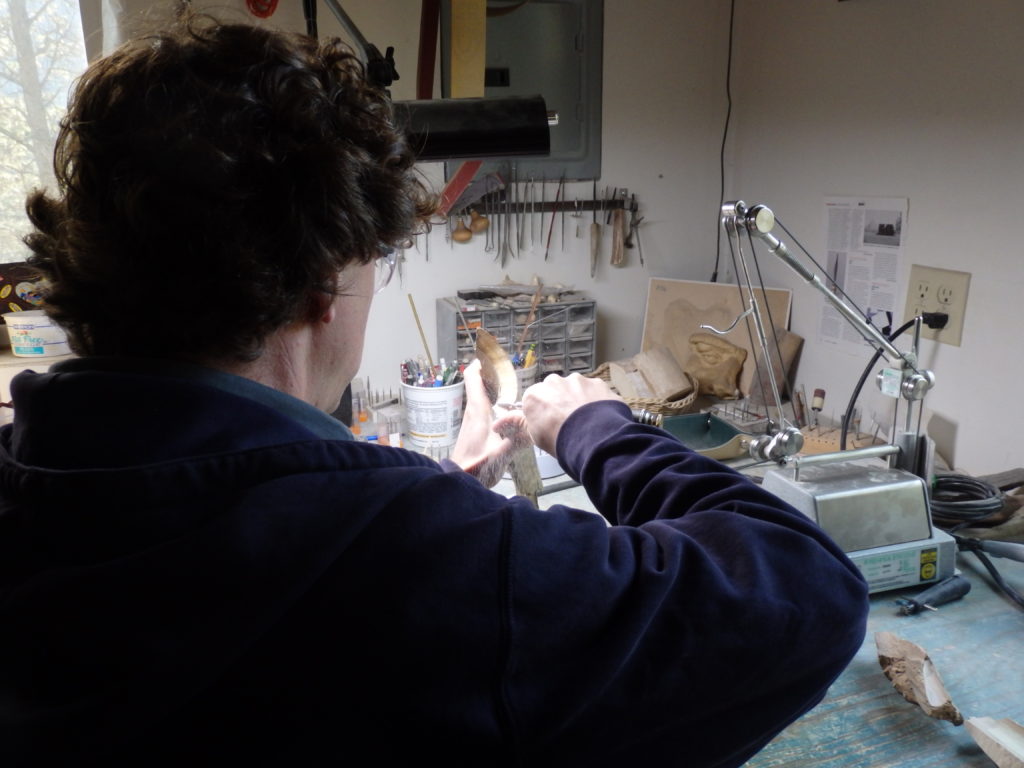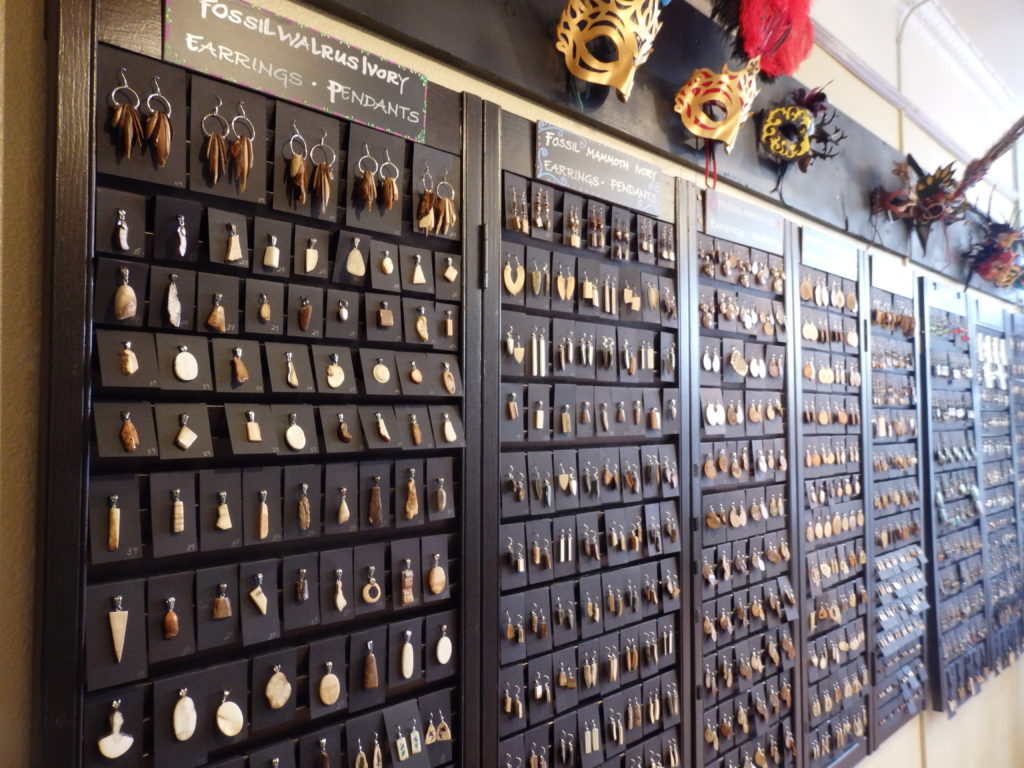
Restrictions on the ivory industry are multiplying in the U.S., causing concern for artists in Alaska. Alaska Native carvers do have a degree of protection under federal law. But, non-Native carvers who only work with fossilized ivory are not shielded in the same way. In Skagway, where thousands of cruise visitors stop each summer, there is a small but significant group of ivory carvers and sellers who are worried about the future of their craft.
Bruce Schindler hunches over a work table in his sunny Skagway studio. He uses a dental tool he’s adapted to for carving to work on a small piece of fossilized mammoth ivory. He holds up the piece, revealing a pair of eyes.
Schindler came to Skagway in 1993 to drive a tour bus. Soon after, he started working with ivory. The mammoth ivory he restores and carves comes from the Dawson City area, in the Yukon.
“I go up and I’ll drive hundreds of miles of dirt roads, going from gold mine to gold mine, searching for miners who are willing to sell some of the tusks they find,” Schindler said.
The mammoth tusks are unearthed as a byproduct of mining. Schindler said if they aren’t purchased and restored, they will start to deteriorate.
“Once a frozen tusk is brought to the surface by a miner, it will start to degrade. It will start to rot. If you don’t take actions to preserve it, in a few years it will be completely worthless,” Schindler said. “And in a few more years it will just be dust.“
Schindler collects thousands of pounds of fossilized tusks and brings them back to his studio, where he restores them or carves them into smaller pieces. He also works with fossilized walrus tusks.
Last year, the Obama administration put an almost complete ban the commercial trade of African elephant ivory in the U.S. But that ban didn’t touch the fossil ivories that Schindler and others in Skagway use. Those are still legal.
And Alaska Natives are permitted to harvest walrus ivory under the Marine Mammal Protection Act.
But some states have gone a step further, implementing tougher restrictions that prohibit the trade of nearly all ivory. Schindler’s concern is that a similar ban could come to Alaska and devastate the industry here.
“It’s not just scary,” Schindler said. “It’s kind of apocalyptic in many ways.”
Zak Smith is with the Natural Resources Defense Council. It’s one of several groups that have lobbied states to put tougher restrictions on ivory.
Smith said they’re not going after anything protected under federal law. That includes the walrus ivory that Alaska Natives are allowed to harvest. But the fossilized ivory is a different story.
“NRDC supports the closure of domestic ivory markets focused on elephant ivory,” Smith said. “And including ivory markets that offer a cover for elephant ivory, for the illegal trade in elephant ivory.”
Smith said illegal elephant ivory is often presented as a legal product. So prohibiting the trade of other ivories could help cut back on illegal behavior. And some states agree with that logic. For example, California has a ban that extends to fossilized ivory.
Those outside laws are already affecting Alaska carvers. Schindler says he’s lost about half of his customers – artists who used to purchase tusks from him for their own work.

Locally, Schindler said the market is strong. But there is still uncertainty.
Kathy Wassman’s family owns a shop called Taiya River Arts. Wassman wears ivory jewelry that she carved herself. She says sometimes customers question the ethics of what they’re purchasing.
“I think it’s a teaching moment most of the time,” Wassman said. “It’s an opportunity to let people know that, hey what you’re looking at is unique and it has nothing to do with endangered species.”
Schindler said, as carvers, they aren’t against most of what ivory bans in other states entail.
“To add Alaskan ivories to this ban is shameful,” Schindler said. “And it’s misguided.”
A resolution was introduced in the Alaska Senate in February that aims at protecting legally acquired walrus, mammoth and mastodon ivory from current and future laws. Schindler has also been lobbying for local support. The Skagway Assembly recently voted to endorse the resolution in the senate.
Schindler continues to push to protect the legal ivory industry in Alaska. But, he is already starting to diversify his business.
“Mammoth ivory is still going to stay the center of what I do,” Schindler said. “But I’m starting to work gold. Because I have access to gold miners, I’m buying gold from them. So I’m starting to work my own gold jewelry. I want a backup.”
Schindler said no matter what happens, the Skagway artists will find their way forward.
“We will adapt,” Schindler said. “But it will be a shell of what we have done. And the beauty and the joy of restoring something that just had no life beforehand.”
They’re worried the momentum against the ivory trade doesn’t consider the unique and important role it plays in local economies like Skagway’s.




